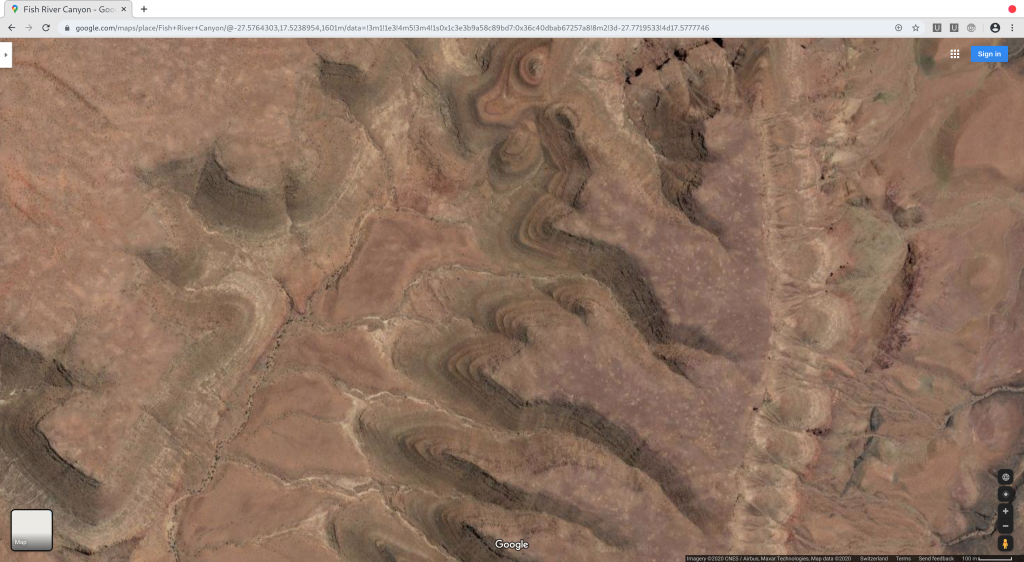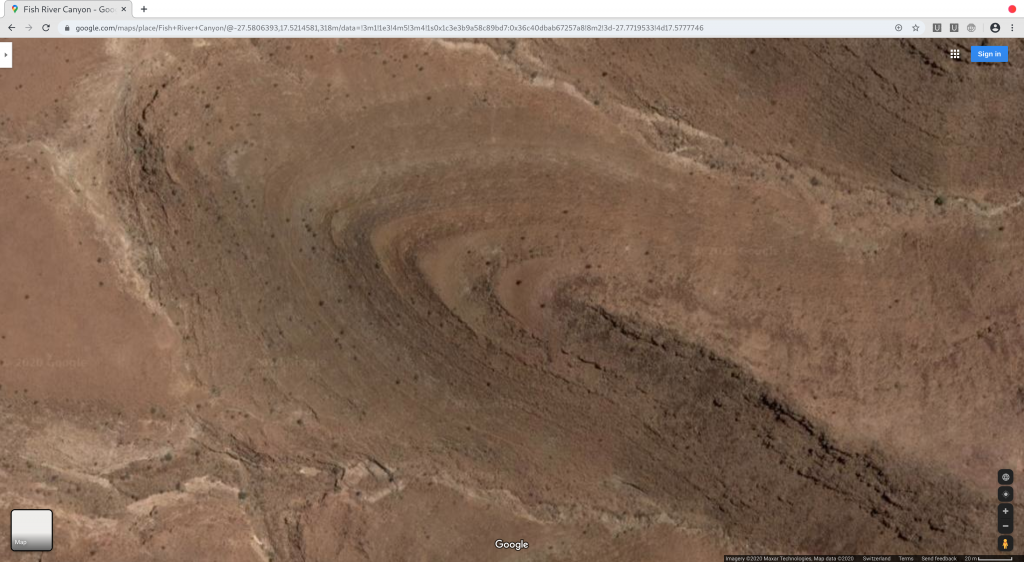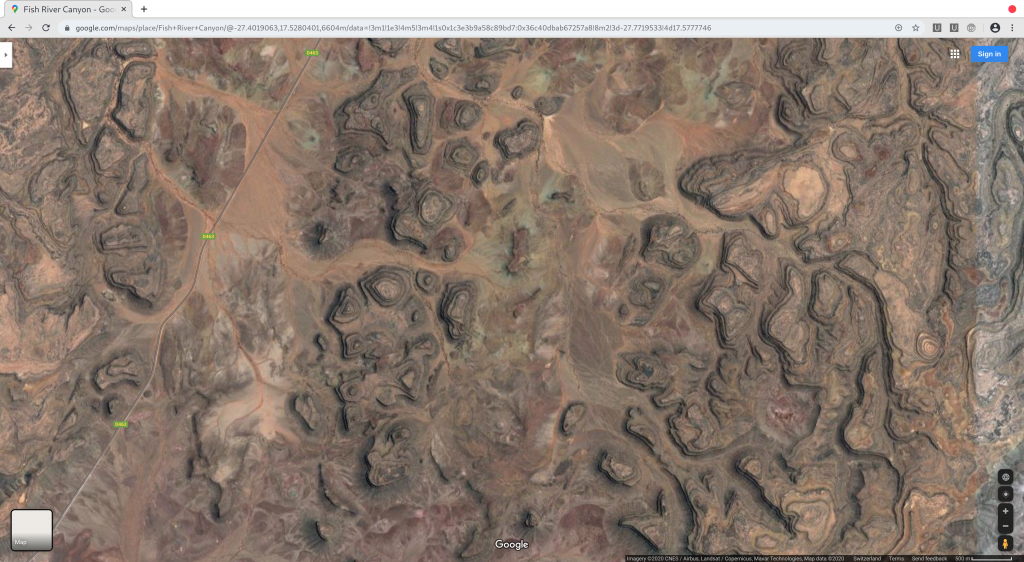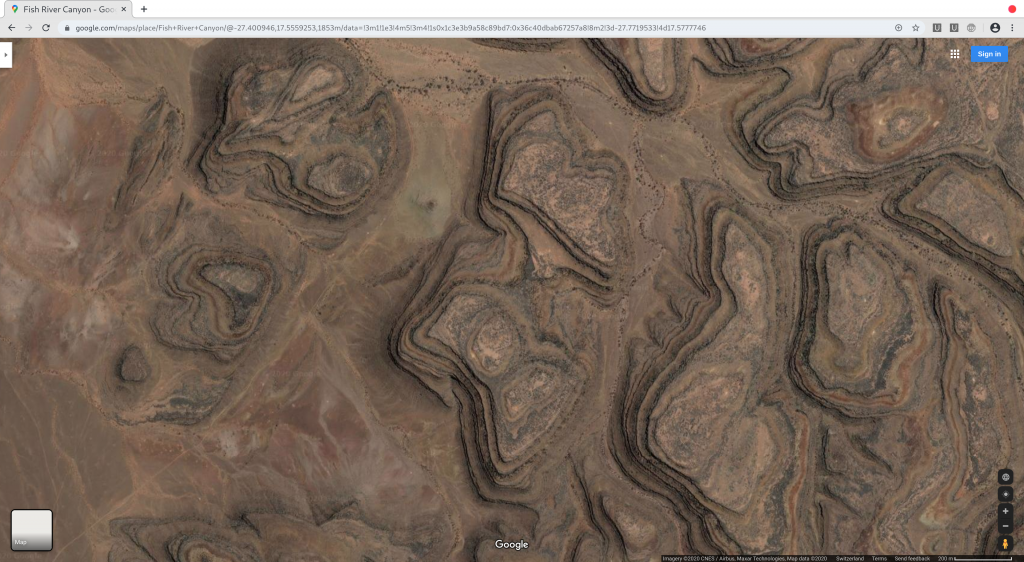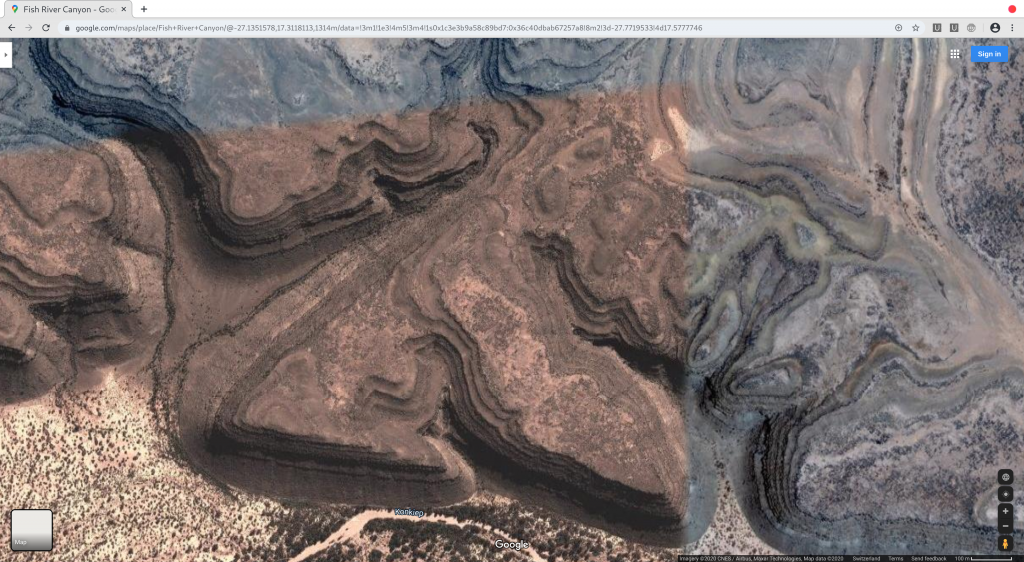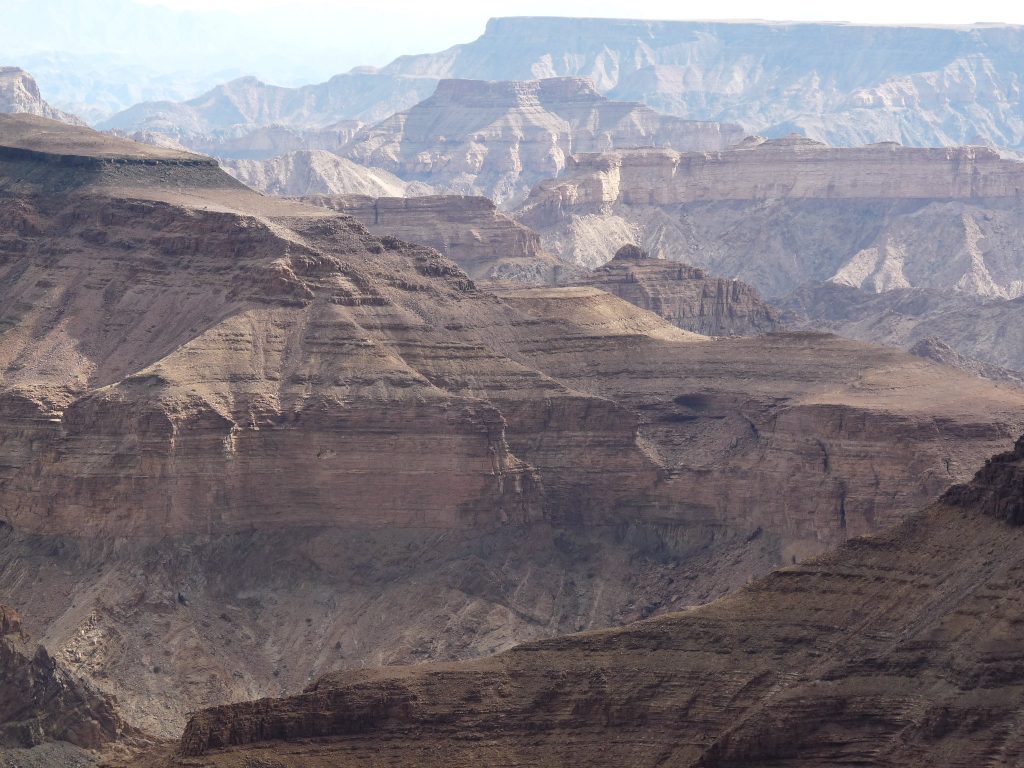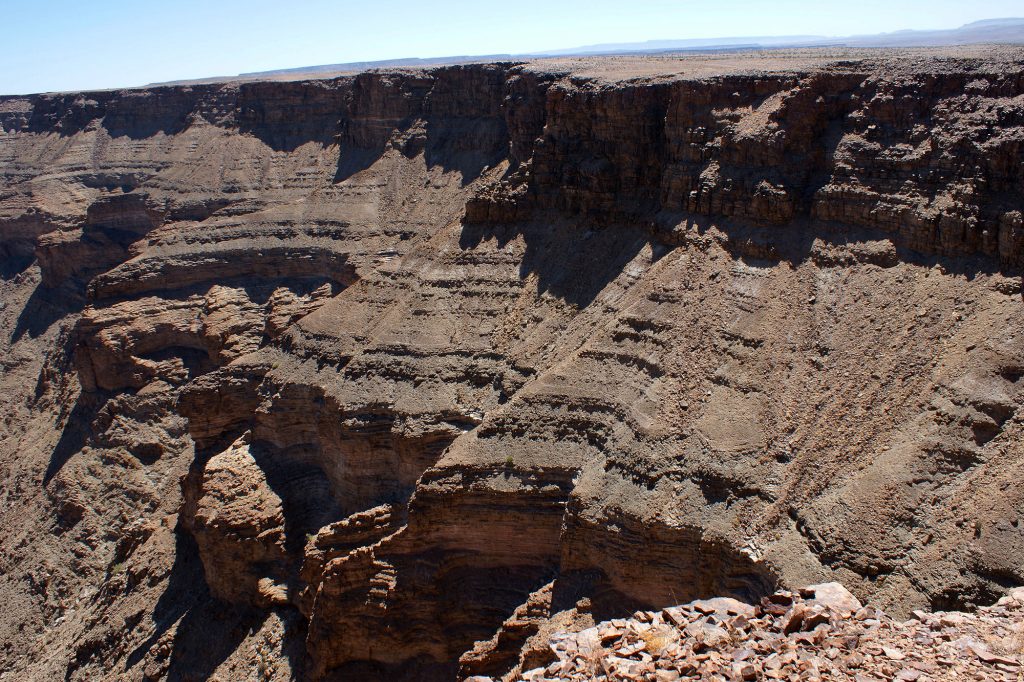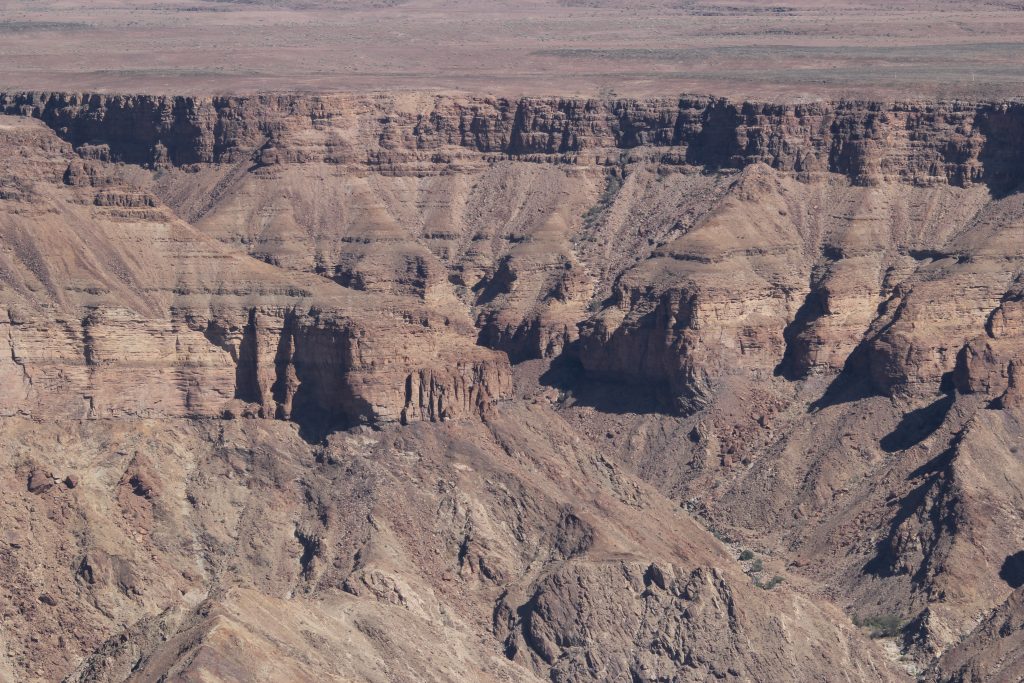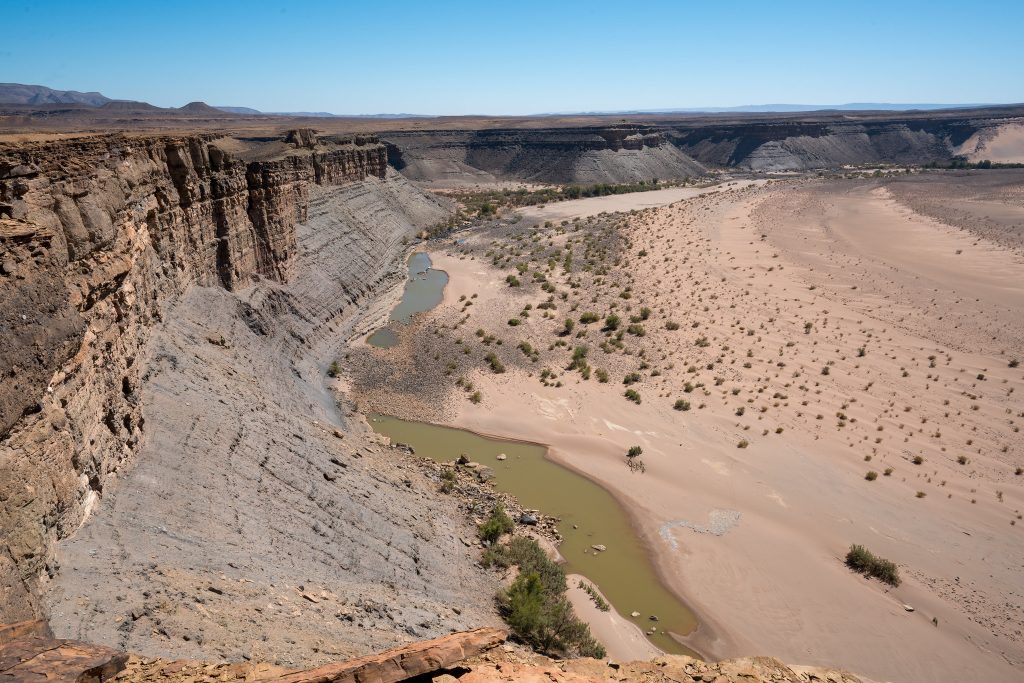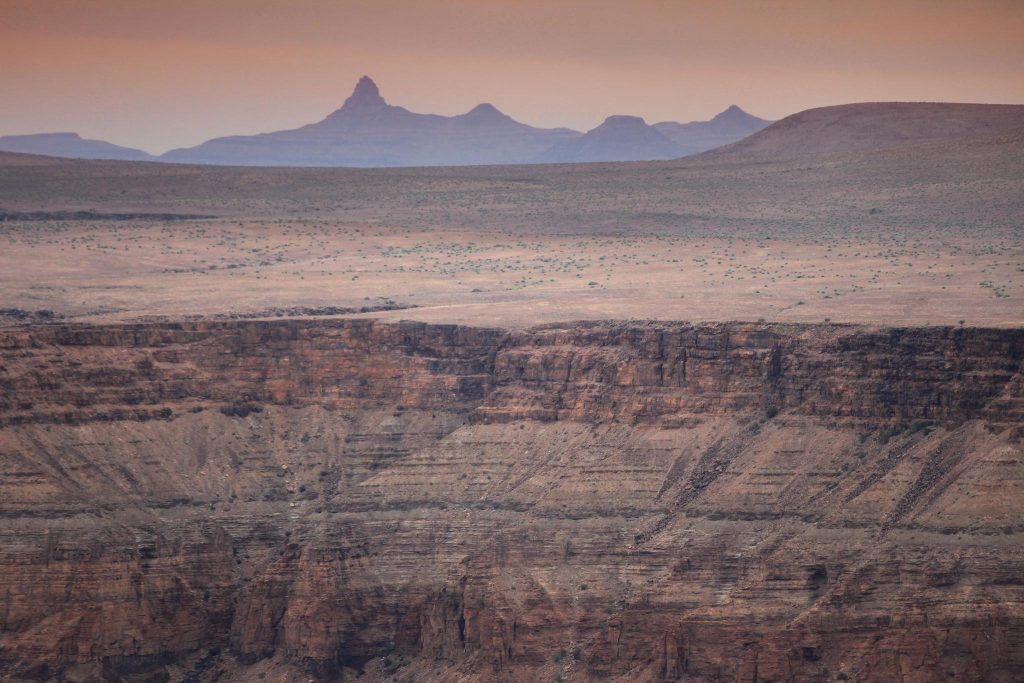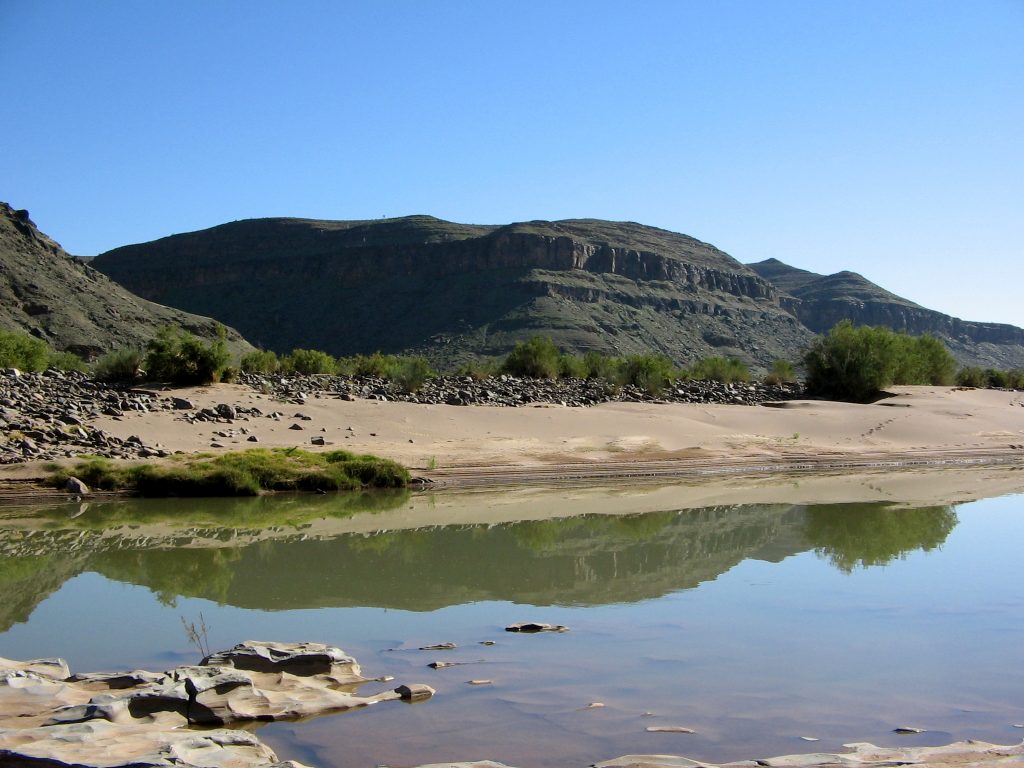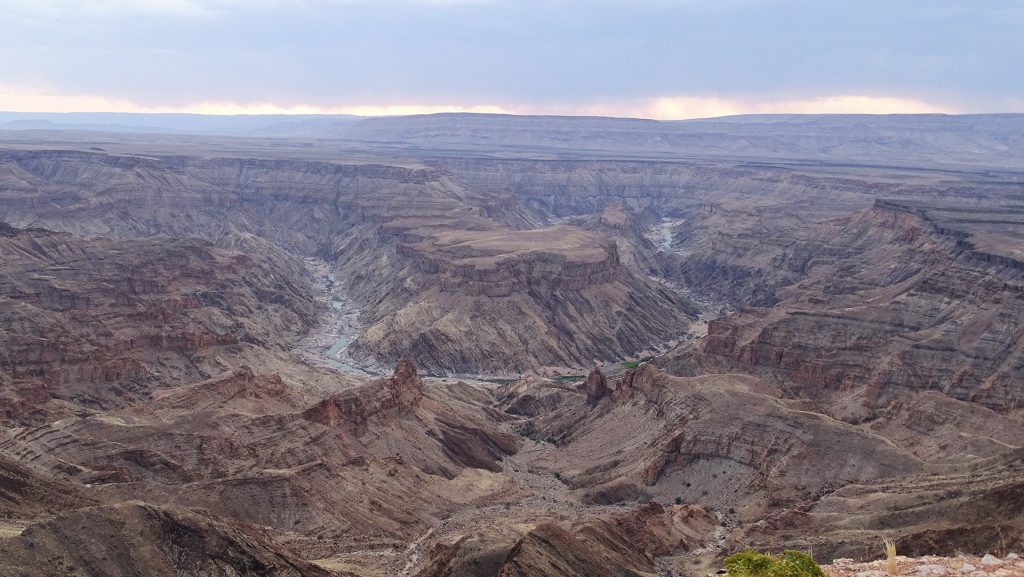
Fish River Canyon, Namibia
Please see Part A for the initial introduction.
Geologists tell us that canyons are formed by the action of water flowing over and through the landscape. It is also possible that at least some are the remains of civilisations that built up around rivers, like many cities we see today. Of course, we do not dispute that water and other environmental factors have helped shaped the current landscape. However, erosion/weathering do not account for the terracing style seen at many of these sites ie they were built that way.
We will begin looking at overhead shots of the region in Google Maps / Bing Maps before taking a look at photos taken on the ground. The overhead shots alone show the artificial terraced nature of these structural remains.
